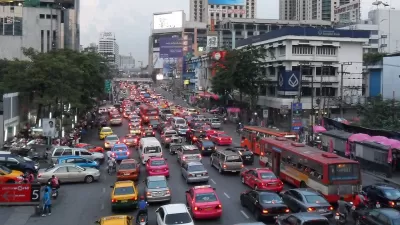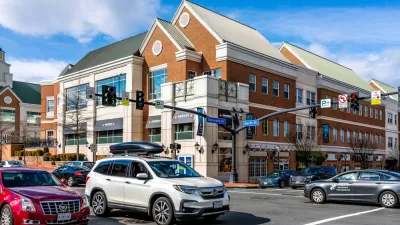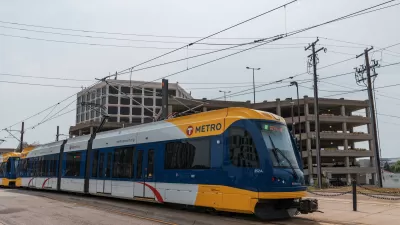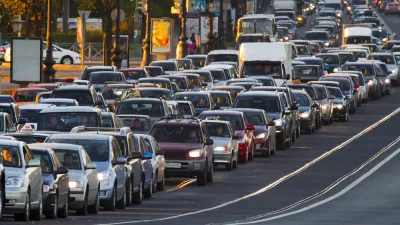Determining whether to widen a street solely based on rush hour traffic ignores how the street is used and who uses it the rest of the day.

Writing in Streets.mn, Bill Lindeke challenges current practices in planning that place too much emphasis on Level of Service (LOS) and rush hour traffic in determining how we build out our roads. Using examples from Saint Paul, Lindeke notes that the increase in vehicle movement through intersection is great for the few hours of rush hour traffic, and barely noticeable at all other times of the day. And that newly widened road really isn’t doing any favors for moving pedestrians around.
If you combine the two “peak hours” (giving them 2-hour time slots), you end up with 4 hours of the 24-hour day. That leaves 20-hours of the day that are “off peak”, times when the road will be “overbuilt” for the amount of traffic that it has.
Basically, transportation planners are always faced with a choice here: Do you give design priority to the people using the street for those 4 hours of the day at the expense of the people that “use” the street for the other 20 hours?
Lindeke suggests a move toward using a multi-modal LOS "that balanced LOS for cars against LOS for other modes of mobility" (i.e., pedestrians, cars, bicycles, buses). Another option would be to simply expand the hours by which we measure LOS to get a better understanding of how the roadway is used throughout the day, and planning for all users, rather than just the few that clog the intersections during rush hour.
FULL STORY: The Injustice of Peak Hour Myopia

Alabama: Trump Terminates Settlements for Black Communities Harmed By Raw Sewage
Trump deemed the landmark civil rights agreement “illegal DEI and environmental justice policy.”

Planetizen Federal Action Tracker
A weekly monitor of how Trump’s orders and actions are impacting planners and planning in America.

The 120 Year Old Tiny Home Villages That Sheltered San Francisco’s Earthquake Refugees
More than a century ago, San Francisco mobilized to house thousands of residents displaced by the 1906 earthquake. Could their strategy offer a model for the present?

In Both Crashes and Crime, Public Transportation is Far Safer than Driving
Contrary to popular assumptions, public transportation has far lower crash and crime rates than automobile travel. For safer communities, improve and encourage transit travel.

Report: Zoning Reforms Should Complement Nashville’s Ambitious Transit Plan
Without reform, restrictive zoning codes will limit the impact of the city’s planned transit expansion and could exclude some of the residents who depend on transit the most.

Judge Orders Release of Frozen IRA, IIJA Funding
The decision is a victory for environmental groups who charged that freezing funds for critical infrastructure and disaster response programs caused “real and irreparable harm” to communities.
Urban Design for Planners 1: Software Tools
This six-course series explores essential urban design concepts using open source software and equips planners with the tools they need to participate fully in the urban design process.
Planning for Universal Design
Learn the tools for implementing Universal Design in planning regulations.
Clanton & Associates, Inc.
Jessamine County Fiscal Court
Institute for Housing and Urban Development Studies (IHS)
City of Grandview
Harvard GSD Executive Education
Toledo-Lucas County Plan Commissions
Salt Lake City
NYU Wagner Graduate School of Public Service





























